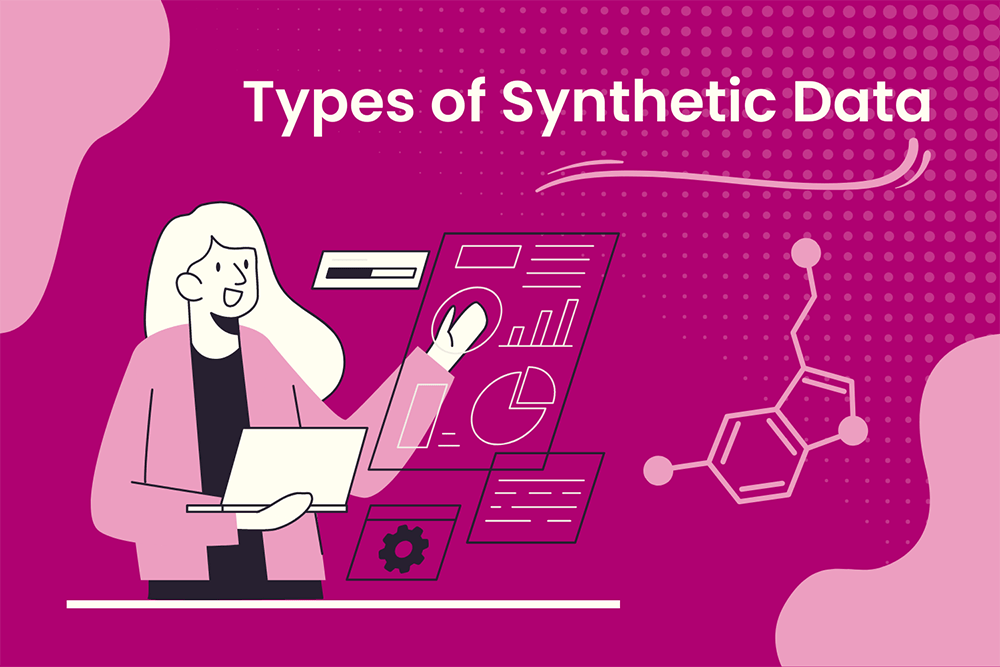Data is one of today’s most valuable resources. However, because actual data is expensive, sensitive, and time-consuming to collect, it is not always a choice. When training machine learning models, however, utilizing synthetic data may be a valuable replacement.
In this post, we will define synthetic data and discuss several forms of synthetic data.
Introduction
Synthetic data is any information that was made artificially and does not correctly represent events or objects in the actual world. Algorithm-generated synthetic data is used in model datasets for validation or training. Synthetic data may be used to test or train machine learning (ML) models by simulating operational or production data.
The capacity to produce huge training datasets with no human labelling of data and the removal of constraints connected with the usage of regulated or sensitive data are two significant advantages of synthetic data.. Synthetic data can also be used to alter data in ways that genuine data cannot.
Types of Synthetic Data:
Synthetic data is created at random to disguise sensitive personal information while preserving statistical details of characteristics in the original data. To broadly classify forms of synthetic data, three categories can be used:
Fully Synthetic Data
This information is totally made up; it contains no original data. Typically, the data generator for this type of data will estimate the density function parameters of the features in the real data. Following that, privacy-protected series are generated at random for each feature based on the predicted density functions.
If only a limited fraction of real data characteristics is chosen to be replaced with synthetic data, the protected series of these features are mapped to the other features of the actual data in order to rank the protected series and the real series in the same order.
Traditional techniques that can be used to produce completely synthetic data include bootstrap procedures and multiple imputations. Because the data is purely synthetic and no real data exists, this approach provides excellent privacy protection with a reliance on the authenticity of the data.
This data is entirely generated and contains no original data. This form of data generator will generally identify the density function of features in actual data and estimate their parameters. Later, from the predicted density functions, privacy-protected series are created at random for each feature. If just a few real-world features are chosen for replacement with synthetic data, the protected series of these characteristics is mapped to the other real-world features in order to rank the protected and real series in the same order. Bootstrap approaches and multiple imputations are two fundamental ways for generating totally synthetic data.
Because the data is totally synthetic and no real data exists, this approach provides great privacy protection with a reliance on the data’s veracity.
Partially Synthetic Data
This data merely replaces the values of a few sensitive attributes with synthetic values. The true values are only adjusted in this circumstance if there is a significant danger of disclosure.
This is done to ensure privacy in newly created data. To generate partially synthetic data, model-based approaches and multiple imputations are utilized. These approaches can also be used to fill in missing values in real-world data.
This data merely replaces the values of a few sensitive attributes with synthetic values. In this situation, the true values are substituted only if there is a substantial danger of exposure. This is done to protect the privacy of freshly created data. Multiple imputation and model-based approaches are used to produce partially synthetic data. These strategies are also useful for filling in missing values in real-world data.
Hybrid Synthetic Data:
These approaches can also be used to fill in missing values in real-world data. Data that is created using both real and made-up information is referred to as hybrid synthetic data. For each random actual data record, a corresponding record from the synthetic data is picked, and the two are then blended to generate hybrid data.
The advantages of totally and partially synthetic data are presented. As a result, it has a reputation for providing better privacy protection and utility than the other two, but at the price of taking up more memory and processing time.
This data is created by combining actual and fake data. A near record in the synthetic data is picked for each random record of actual data, and both are then joined to generate hybrid data. It offers the benefits of both completely and partially generated data. As a result, it is well recognized to provide strong privacy preservation with high utility when compared to the other two, but at the expense of additional memory and processing time.


